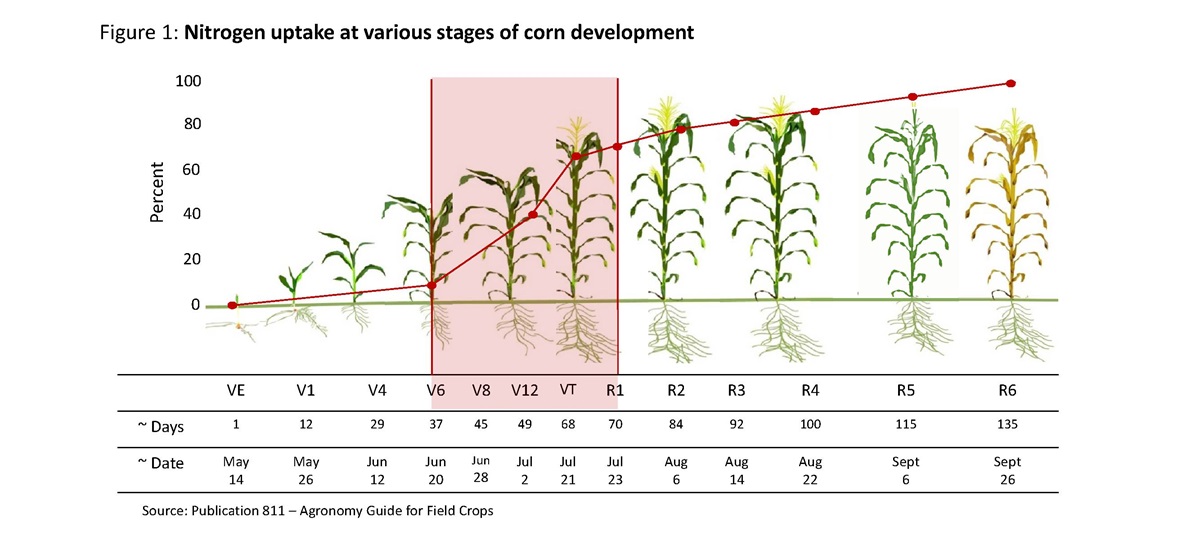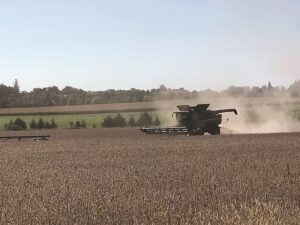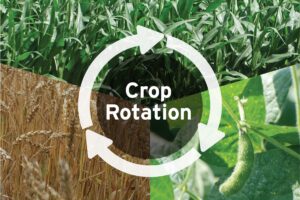Nitrogen availability
AGRONOMIC INFORMATION FROM ONTARIO'S CROP SPECIALISTS

ADDING PH AND CARBON TO NITROGEN (C:N) ratio to the manure analysis could help fine-tune nitrogen (N) predictions for corn and wheat crops.
Wouldn’t it be nice if we could predict how much N from manure and other organic amendments is available during the period when crop needs are highest? In addition to weather and soil conditions, predicting N availability from manure and other organic amendments will always be more complex than from commercial N. For example, high manure pH (near eight) combined with warm temperatures (>25˚C) will result in rapid ammonia loss when manure is not immediately incorporated.
MAXIMUM NUTRIENT AVAILABILITY
The goal with organic amendments is to have the maximum nutrients available for crop growth when crop nutrient needs are highest. Figure 1 illustrates the nitrogen uptake at various stages of corn development and shows the highest uptake (over 50 per cent of the total) between when corn has six leaf collars (V6) and begins its rapid elongation to the beginning of the reproductive stage (silking), as shown by the shaded section in the illustration.
Organic amendments are not created equal. Ration formulation, including protein will affect manure composition. The difference in manure N composition – the amount in ammonium form (readily plant available) versus the amount as organic N (slower release) – will indicate the expected N for a corn or wheat crop.
REFINING NITROGEN AVAILABILITY
Knowing the organic amendment’s C:N ratio will help refine N availability. The C:N ratio of soil is about 10:1. Soil microbes use nitrogen as a food source to break down carbon (from manure or crop residue). The lower the C:N ratio of manure, the more rapid the microbial conversion of organic N compared to materials with C:N ratios above 10:1. Spring- applied manure at a C:N ratio of 20:1 will not supply enough N during the period of rapid crop growth but will release N to help with grain protein and later season crop N needs. C:N ratios above 30:1 will “borrow” N from the soil and reduce crop-available N. Generally, the higher the C:N ratio, the longer the process for conversion to crop-available N. Materials like anaerobic digestate and liquid hog manure often have C:N ratios under 5:1 which makes them ideal options for side- dress applications into corn or wheat.
In a wheat crop, the timing of the highest N needs is similar in that it occurs during wheat elongation to the heading stage. The difference is that this occurs about a month earlier than for corn when soil and air temperatures are cooler and microbial activity is slower. Liquid cattle manure often has a C:N ratio around 12:1 or higher and, in most seasons, would not provide enough N during the period of highest needs without supplementing with commercial N. •











